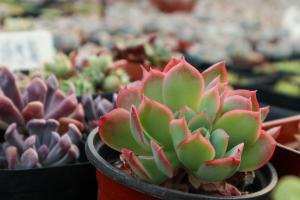I Growth habit
American crown orchid has high requirements for temperature and humidity. Too high or too low temperature will affect the normal growth of orchids. Generally speaking, the environment of 15 to 30 degrees is the most suitable for its growth
At the same time, the roots of orchids need to be protected, and special sandy planting soil rich in nutrition and relatively loose should be prepared for them. In addition, it is required to contain more humus and keep the pH of planting soil between 5.5 and 6.5

II Environmental regulation
There are two main ways to cultivate meiguanlan, one is orchid shed and the other is pot loading
In the blue shed, the temperature and light should be adjusted to the appropriate range according to the season. For example, when cooling in winter, the temperature and light should be increased, while in summer, the light should be reduced to prevent burning the leaves. In February, the environmental humidity, temperature and light conditions should be improved to promote the orchid into the growth period, but it should be noted that the temperature should not be higher than 25 degrees at any time to prevent it from being hurt
When loading the basin, be careful not to hurt the orchid rhizome, and prevent the rhizome from contacting the basin wall. After filling the basin, it should be placed in an environment with suitable lighting conditions, temperature and humidity and ventilation, and ensure sufficient watering for the first time

III Water and fertilizer management
If you want to raise orchids well, you should also pay attention to the time and amount of watering and fertilization
When watering, pay attention to the use of clean and pollution-free slightly acidic water. If there are rotten black spots on orchid roots, buds or leaves, it is mostly related to water quality. Avoid watering at noon when the sun is strong and the temperature is high
It is recommended to use farmyard manure. Pour it along the edge of the basin after mixing it with water 10 to 20 times. Do not touch the blue leaves, but pay attention to the maturity period of the soil. More than one year is the most appropriate. If chemical fertilizer is applied, pay attention to balance and strictly control the concentration. If it is a leaf art seedling, in order to control the synthesis of nitrogen, phosphorus and potassium, nitrogen fertilizer and fertilizer containing manganese and magnesium should be avoided
IV Precautions
There are many diseases that are easy to infect orchids, such as sheath rust, white silk, anthrax and scale insects. If they are encountered, corresponding measures should be taken in time, and the ambient temperature and humidity should be kept appropriate to prevent the further expansion of diseases and pests and harm the orchid itself


 jackfruit
jackfruit snake plant
snake plant hibiscus
hibiscus hydrangea
hydrangea lavender
lavender Green roses climb al...
Green roses climb al... If you don't pay att...
If you don't pay att... Management of four g...
Management of four g...


































